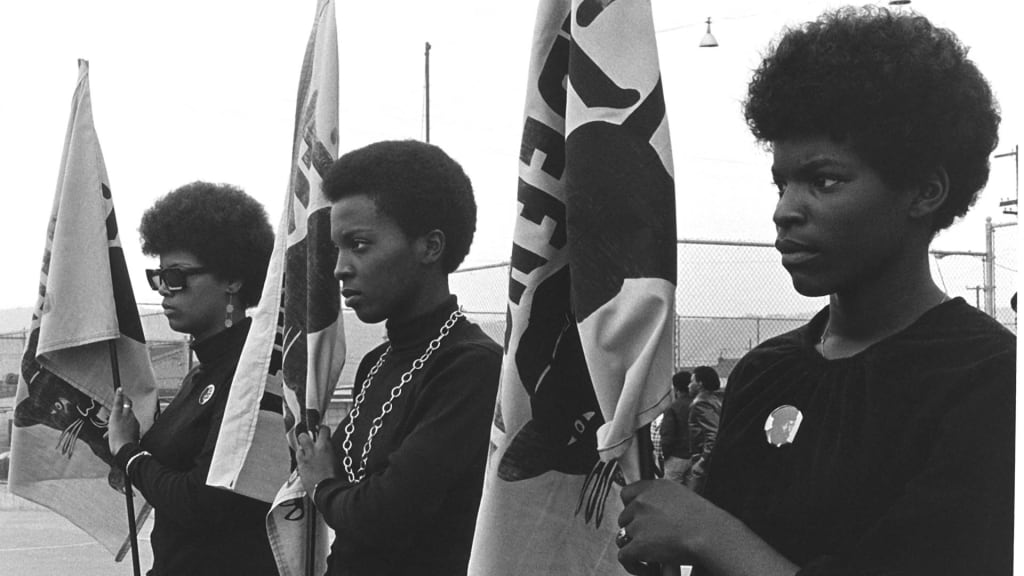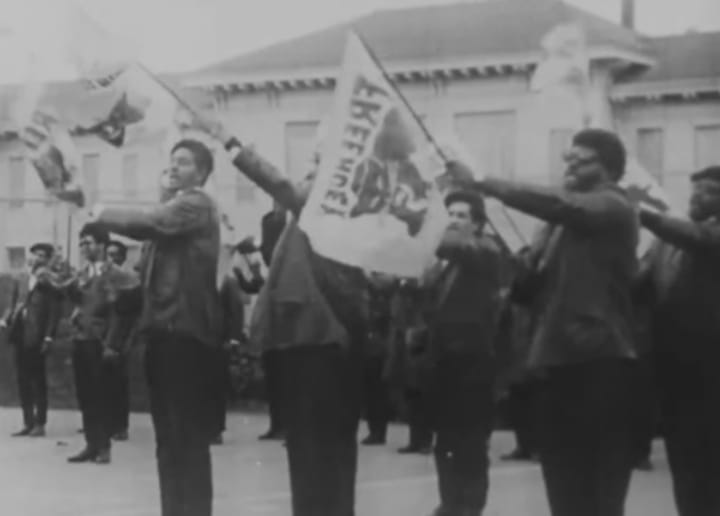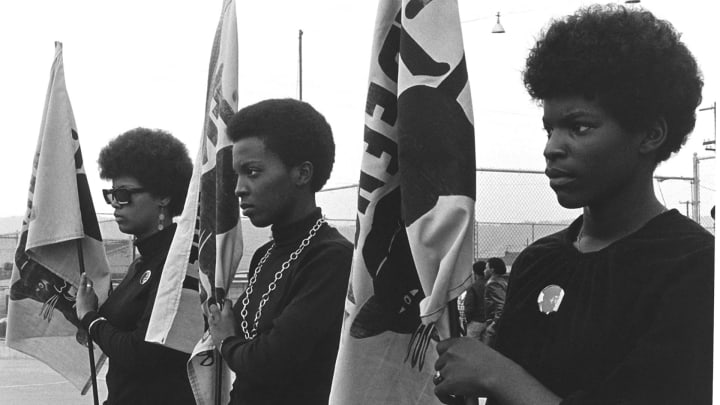The Black Panther Party for Self Defense and it’s Demise
A Brief Case Study and Analysis

The Black Panther Party for Self Defense (BPP) was founded in October of 1966 by Huey P. Newton and Bobby Seale who shared a passion for the protection and betterment of the black community. At this time, police brutality towards the black community was widely unknown to the mass populace- or at least widely ignored- but known all too well and feared by the black community. Shortly after it’s founding, they recruited Emory Douglas who was a graphic designer to work on their Black Panther Party monthly magazine. Douglas quickly became integrated with the group as their head art and design director. With his help they were able to sell copies of BPP weekly worldwide. Soon their numbers would increase from about 10 to over 200. It seemed that the magazine and it’s imagery spoke volumes to the black community world wide. The Black Panther Party for Self Defense employed many tactics through its infancy to peak years of activity. Though it was met with opposition and eventually led to the deaths of some members and leaders; it’s message of black power and positive impact on the black community has continued to persevere through the decades.
In the early days of the Black Panther Party for Self Defense, they relied heavily on one specific tactic: using the letter of the law to ensure the fair treatment and safety of their community members. The most famous use by the Black Panther Party of this was them tailing police cars to ensure they were treating their community members fairly and without prejudice. They would stand outside their cars during traffic stops, some armed with law books, others with pistols raised straight into the air. California law at this time allowed citizens to carry as long as it was visible and seen in a non-threatening manner. The intent of making it visible to everyone was to ensure police could not mistake - or claim - that they were having guns pointed at them. It also ensured that bystanders could not misconstrue what was going on. These were ways that the Black Panther Party successfully avoided black casualties, all while still protecting their community.
In May of 1967, California passed a law, making carrying in plain sight illegal, effectively putting a stop to one of the main Black Panther Party tactics. That day, before the final vote was in, Black Panther Party members stormed the capitol, employing their right to bear arms one last time. They gave a speech on the ‘Executive Mandate #1’ about how California was attempting to disarm minorities.

Following this incident, Black Panther Party had their peak years until 1975. During this time there was a large change in consciousness and identity in the black community. The rise of ‘Black Power’ and the idea of ‘Black is Beautiful’ swept the nation thanks to their message, as well as the employment of art and theater. Soon, women no longer adorned themselves with white-accepting weaves and hair styles; they let their hair grow round and natural. The community as a whole began to celebrate their blackness. The Black Panther Party became the strongest embodiment of Black Power, and used the concept of Black Nationalism to do so.
Unfortunately, it was this use of Black Power that some claim is what began to split the Black Panther Party into two separate identities- those who supported Black Power as a national movement, and those who supported it as a planetary movement. This split led to less communication between charters, allowing the FBI to infiltrate and cause even more distress. This turmoil boiled down into a handful of shoot outs resulting in many members of the Black Panther Party dead, injured, or in jail awaiting charges. One of these was a founding member of the Black Panther Party; Huey P. Newton. The courtroom drama and rallies to ‘free Huey’ that followed did little to fuel the cause of the Black Panther Party and ultimately led to an imbalance of symbolic and real violence. The inter- fighting along with external forces pushed the remaining leaders to try and get some of their members into local political office positions. Unfortunately they were unsuccessful in getting a majority vote during elections. Paranoia easily took root in leaders because of the militant style of structure in the Black Panther Party.
Throughout all of this, Emory was still producing weekly images for the Black Panther Party for Self Defense Magazine; images that had become progressively more violent and -to some- more radical. Instead of portraying pigs in police uniforms backed against a wall with guns pointed at them, he now depicted a black man shooting and killing a police officer- not a caricature of a pig- in front of a young black boy. What once was symbolizing the black community no longer as victims, now showed them as the aggressors. This, along with the ongoing gun battles with police and other political fringe groups proved to be disastrous to the Black Panther Party cause. By 1970, it’s remaining leaders realized what situation they were in and began to redirect their efforts to community survival programs. These included the Breakfast program and a clothing program, all freely provided by the Black Panther Party.

In addition to this change, Emory’s illustrations changed as well, to reflect the Black Panther Party’s new focus. Instead of depicting ‘pigs’ their magazine cover highlighted images of the black community getting free groceries and other items from the Black Panther Party. In the years following, the Black Panther Party has quieted, widely seen today as a party and movement of the past. But their programs for food and clothing are still well and alive, along with the renewed love of blackness in the black community.
Where did the Black Panther Party go wrong? It’s hard to pinpoint, but the places they became ineffective in were in their political rhetoric and their militant style of leadership, which lead those in charge to have no one they felt they could trust. It seemed the average black person was much more interested and related to the imagery Douglas created weekly for the BPP magazine than the complicated speeches Newton and Seale would give.
The Black Panther Party for Self Defense started off with large aspirations, and though not all were achieved, it accomplished some of it’s main goals including reviving black pride as well as banding together a broken community. After years of demanding things to change and seeing nothing being done, the Panthers took it upon themselves to make changes. Though some would argue their use of ‘violence’ or ‘intimidation’ was counterproductive, it did produce mass media attention on either side and brought in many new members. Whether it was the guns they toted or the color of their skin, the government saw them and their rhetoric as a threat. They employed their best FBI agents to infiltrate and use the leader’s mistrust to further the downfall of the Black Panther Party as it was known and seen back then.

Bibliography
Caruso, Jen. “Theatrical Politics, Media.” (Class Lecture, Art and Social Change, MCAD, 2023)
Lampert, Nicolas. 2013 “A People’s Art History of The United States” Party Artist: Emory Douglas and the Black Panther Party. Pp 199-210
Reed, T.V. 2019 “The Art of Protest.” Dramatic Resistance: Theatrical Politics From the Black Panthers to Black Lives Matter. Pp 43-84
Varda, Agnes. Restored and released 2015. “Black Panthers” 1968
About the Creator
QuirkyMin
Aspiring writer, sharing articles of personal interest as well as original short stories.
https://linktr.ee/quirky.min
Enjoyed the story? Support the Creator.
Subscribe for free to receive all their stories in your feed. You could also pledge your support or give them a one-off tip, letting them know you appreciate their work.






Comments
There are no comments for this story
Be the first to respond and start the conversation.